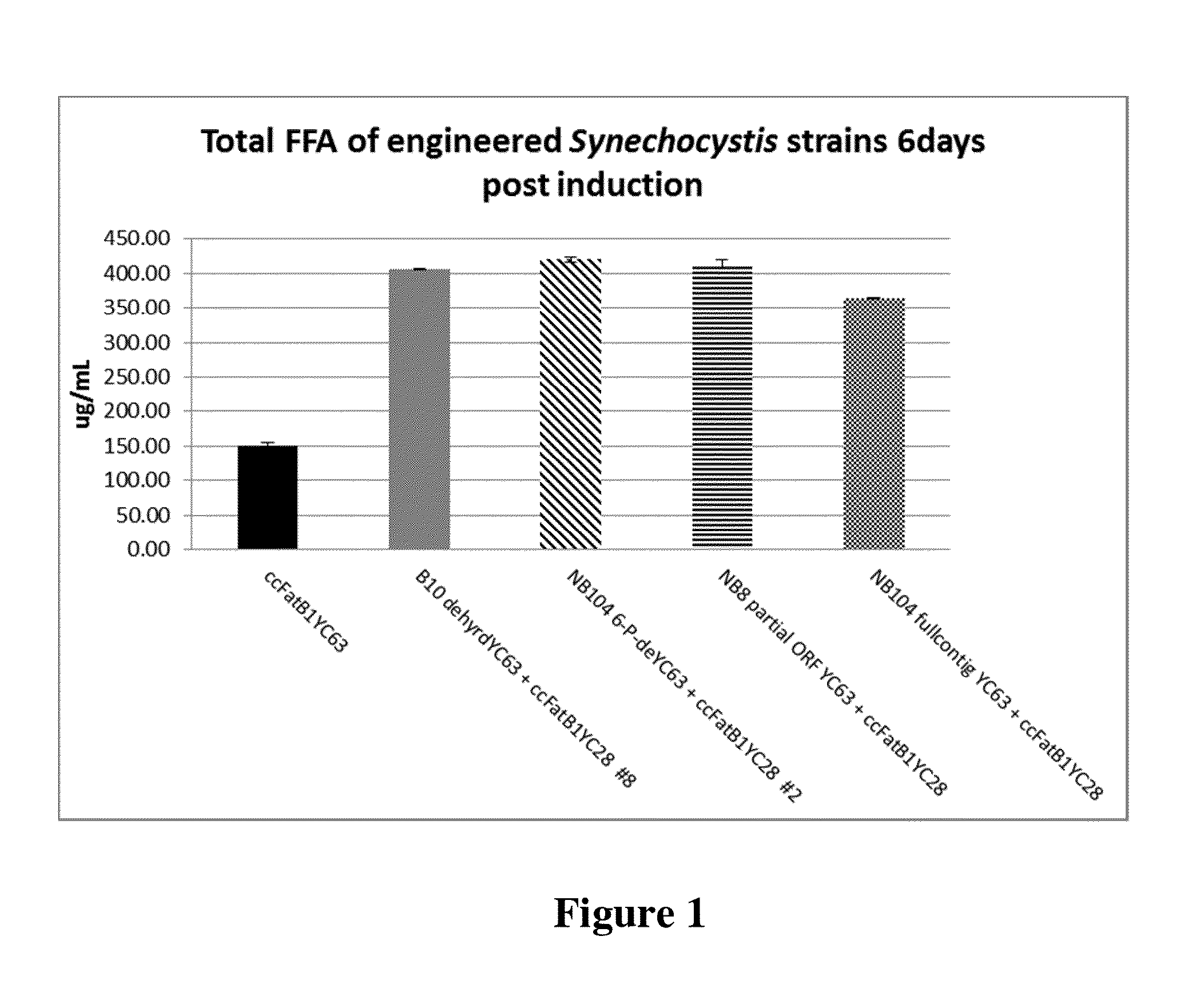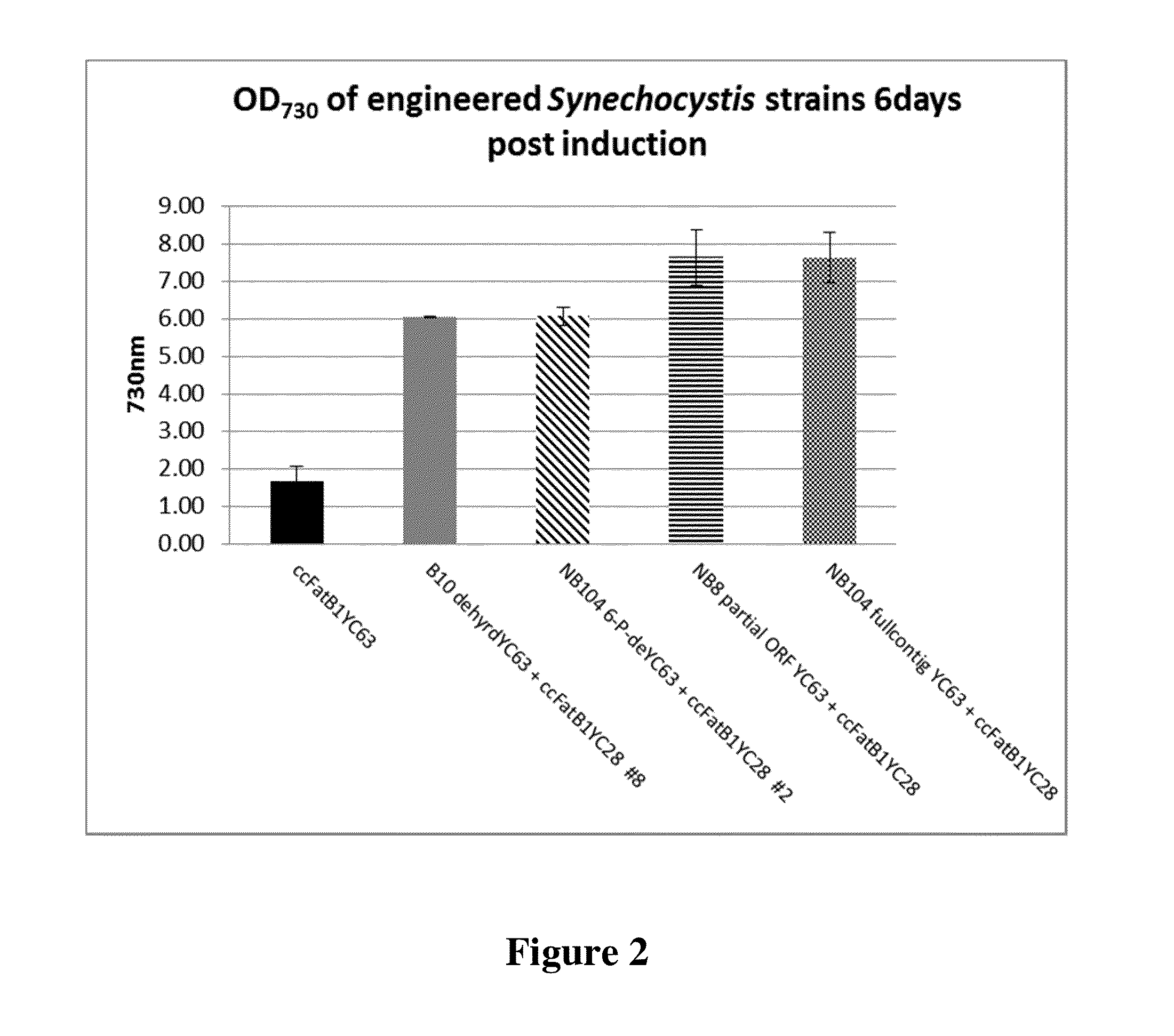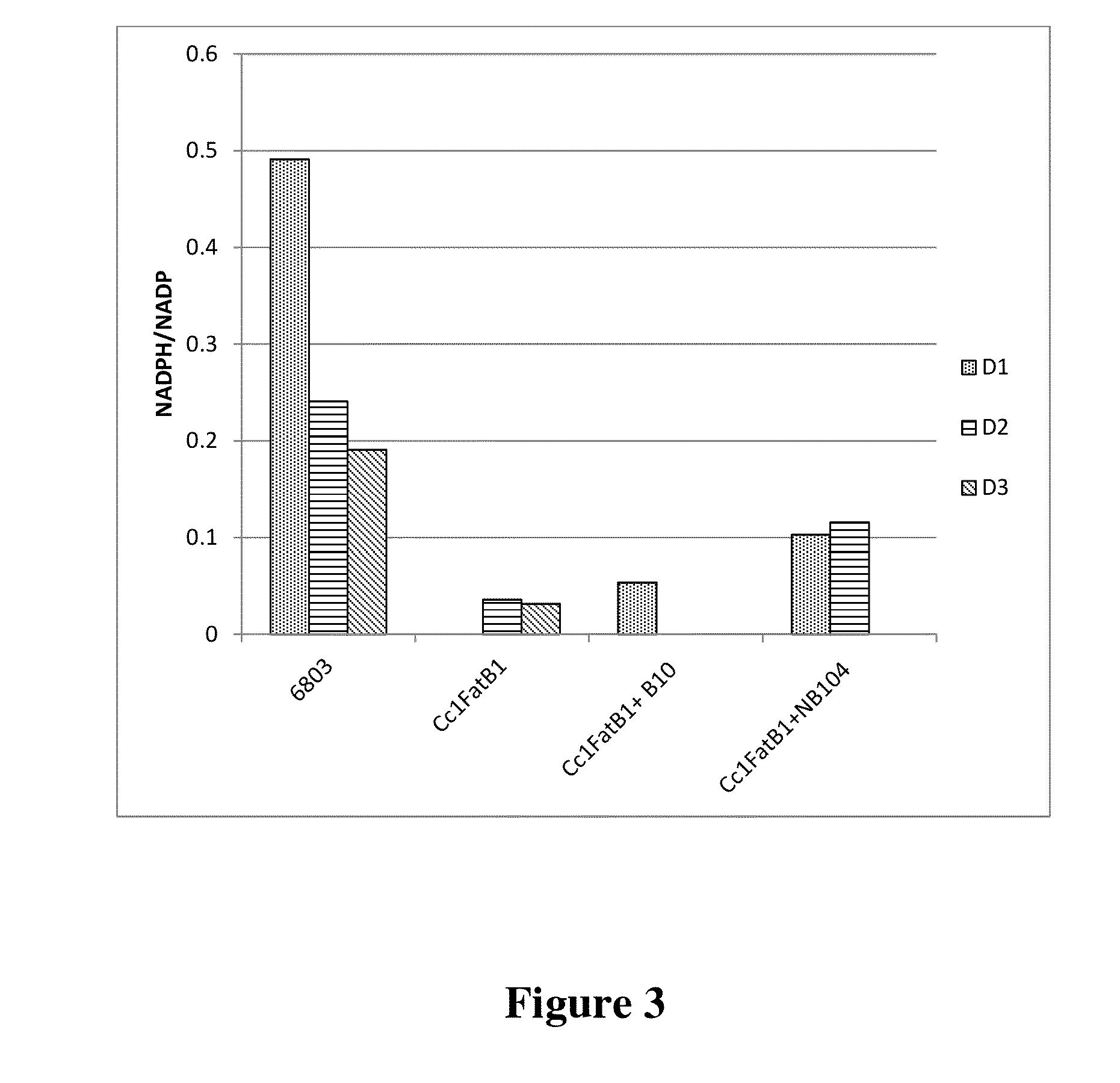Cell systems and methods for improving fatty acid synthesis by expression of dehydrogenases
- Summary
- Abstract
- Description
- Claims
- Application Information
AI Technical Summary
Benefits of technology
Problems solved by technology
Method used
Image
Examples
embodiment 1
[0198]A recombinant microorganism comprising a first non-native nucleic acid molecule comprising a nucleotide sequence encoding a dehydrogenase and at least a second non-native nucleic acid molecule comprising a sequence encoding a polypeptide that participates in lipid biosynthesis; wherein a culture of the recombinant microorganism produces a greater amount of a lipid than is produced by a control culture of a microorganism identical in all respects to the recombinant microorganism that includes the first and second non-native nucleotide sequences, except that the control microorganism does not include the first non-native nucleotide sequence encoding a dehydrogenase, wherein the recombinant microorganism has a higher propagation and / or proliferation rate than the control microorganism under conditions in which the lipid is produced.
embodiment 2
[0199]A recombinant microorganism according to embodiment 1, wherein the dehydrogenase is selected from the group consisting of an aldehyde dehydrogenase, acetaldehyde dehydrogenase, alcohol dehydrogenase, glutamate dehydrogenase, glyceraldehyde 3-phosphate dehydrogenase, 2-hydroxyacid dehydrogenase, isocitrate dehydrogenase, lactate dehydrogenase, malate dehydrogenase, methylmalonate semialdehyde dehydrogenase, succinate dehydrogenase, pyruvate dehydrogenase, alpha ketoglutarate dehydrogenase, D-2-hydroxyacid dehydrogenase, D-2-hydroxyisocaproate dehydrogenase, formate dehydrogenase, D-glycerate dehydrogenase, vancomycin-resistant protein H, D-2-photophoglycerate dehydrogenase, D-lactate dehydrogenase, glucose-6-phosphate dehydrogenase, 6-phosphogluconate dehydrogenase, and a sorbitol dehydrogenase, and / or
the dehydrogenase comprises an amino acid sequence having at least 50% identity to SEQ ID NO:4, SEQ ID NO:6, SEQ ID NO:7, SEQ ID NO:18, or SEQ ID NO:19, SEQ ID NO:2, SEQ ID NO:29,...
embodiment 3
[0200]A recombinant microorganism according to embodiment 1 or 2, wherein the polypeptide that participates in lipid biosynthesis is selected from the group consisting of: an acyl-ACP thioesterase, an acyl-CoA thioesterase, a 4-hydroxybenzoyl-thioesterase, a polypeptide having lipolytic activity, an aldehyde-forming acyl-CoA reductase, an aldehyde-forming acyl-ACP reductase, a carboxylic acid reductase, an alcohol-forming acyl-CoA reductase, an alcohol-forming acyl-ACP reductase, a wax synthase, a decarbonylase, a decarboxylase, a GPAT, an LPAAT, a PAP, and a DGAT; further optionally wherein the lipid is a fatty acid product selected from the group consisting of: a free fatty acid, a fatty aldehyde, a fatty alcohol, an alkane, an alkene, a fatty acid ester, a wax ester, a monoacylglyceride, a diacylglyceride, and a triacylglyceride.
PUM
| Property | Measurement | Unit |
|---|---|---|
| Fraction | aaaaa | aaaaa |
| Fraction | aaaaa | aaaaa |
| Fraction | aaaaa | aaaaa |
Abstract
Description
Claims
Application Information
 Login to View More
Login to View More - R&D
- Intellectual Property
- Life Sciences
- Materials
- Tech Scout
- Unparalleled Data Quality
- Higher Quality Content
- 60% Fewer Hallucinations
Browse by: Latest US Patents, China's latest patents, Technical Efficacy Thesaurus, Application Domain, Technology Topic, Popular Technical Reports.
© 2025 PatSnap. All rights reserved.Legal|Privacy policy|Modern Slavery Act Transparency Statement|Sitemap|About US| Contact US: help@patsnap.com



